July 19th, 2003:
A 20 year-old me was watching Le Tour stage from Toulouse to Ax 3 Domaines. I was watching the Der Kaiser, bedecked in Bianchi Celeste, sticking it to a faltering and later discovered, badly dehydrated American named Lance Armstrong, whom I was never a fan of. I don’t know if it was his lack of European style, or aggressively outward competitive nature that disenchanted the American public’s favorite for me. Unfortunately, Armstrong's teammates and their sponsored equipment bore the same fate by association, including Trek Bicycles. It’s no secret that I’m a fan of storied European brands like Pinarello, and that’s how it’s stayed until early 2016.A number of brands have been developing bikes in the aero market for some time. Initial iterations from the likes of Cerveló that, while I’m sure reduced drag coefficients over a round-tubed frame, also ended up being hideous creations that banked on the end user overlooking aesthetics for wind-cheating shapes. Over the years, each large brand has developed their own version of an aero road bike, the Europeans no different. But what the Euros got so right in traditional cycling they struggled when it came to tech. I think there’s a reason that form and function are commonly not synonymous, since at some point you’ll have to overlook form to gain function, and vise versa. Enter the Trek-Segafredo. Still associated with the brand that I associated with my disdain for Armstrong all those years ago, but now under the same banner as the Italian espresso café franchise and a team lineup that included some of my favorite riders, oozing Euro flavor. When I watched the Giro firsthand in May I took a bit more notice of the Trek-Segafredo camp, and subsequently, their bikes. The old Madone, a rather traditional looking, somewhat featureless-looking flagship racing frame had greatly evolved in the interim. Not unlike a DTM car, the Madone now looked fast standing still, leaning on the side of a team bus. Trek, of all brands, had garnered my attention with an aesthetically pleasing aero road frame.

When word came that AC was getting demo Treks for evaluation, I was eager to swing a leg over the Madone. The bike designed by AC's Nate King used Trek's Project One custom color program with a dark navy base highlighted by cyan and fluo yellow to create a stunning contrast. With so much emphasis put on the aerodynamic qualities of the bike, many components are purpose-built for the bike, including the seatmast, integrated bar, and Trek’s proprietary aero brake system. Shifting duties were handled by a familiar SRAM RED eTap system and my own SRAM SRM powermeter with Rotor Rings, connecting human and bike. Finally, I was lucky enough to have a brand new set of Zipp 454s wrapped in Vittoria’s lauded Corsa G+ tires taking care of rolling duties. The testing process for AC is quite rigorous. A couple-hour spin over familiar terrain isn’t sufficient to get a developed and complete idea of how a bike actually rides. Usually, we’ll ride a bike for a number of days or even weeks over varying terrain and weather conditions to be able to accurately describe a bike or component’s characteristics. Suffice to say, the testing grounds I’d have for the Madone couldn’t have been better; 8 days, over 1000km, and over 62k feet of climbing mixed with smooth roads, headwinds, dirt paths, potholes, mountain passes, foothill rollers, straight and flat stomps, and everything in-between that we would experience during the Escape from LA trip - and more.
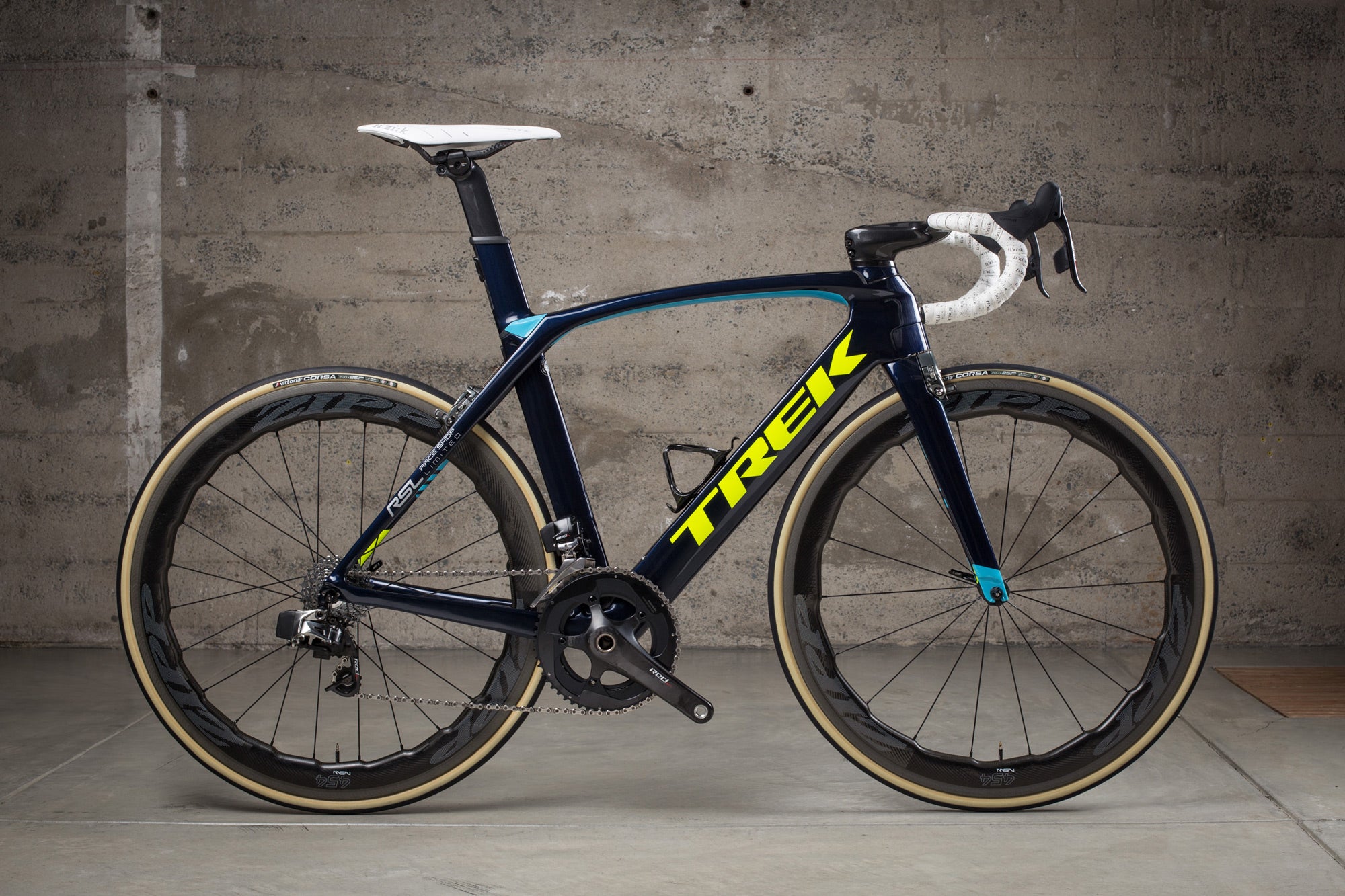

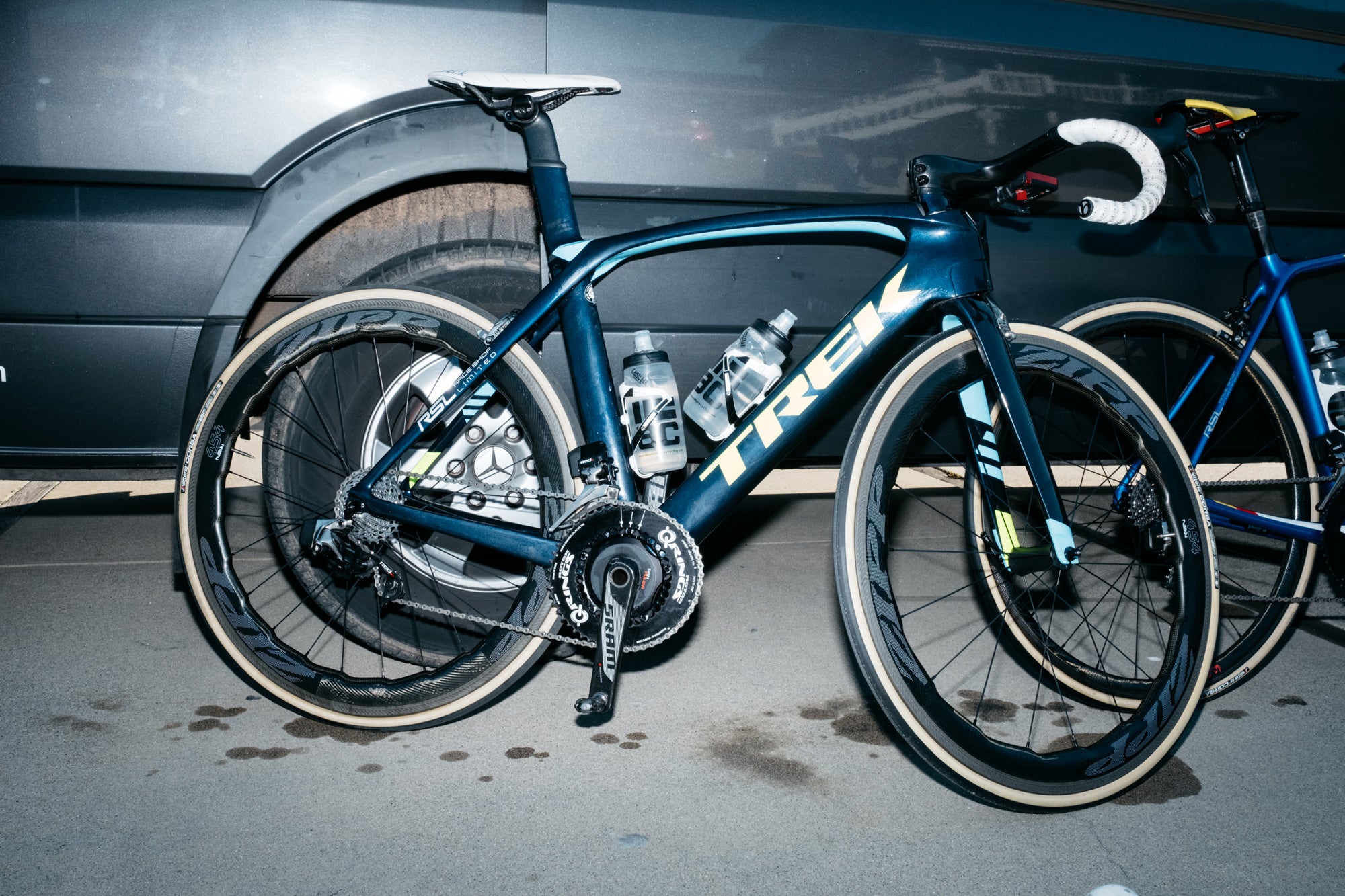
THE RIDE Until only fairly recently, the worth of a road bike was primarily concerned with how stiff it felt. Compliant ride quality was overlooked in favor of a bike that gave a rider an initial feeling of stiff forward progress. On a perfectly smooth road this concept works, but in the real world it offers a ride that suffers over choppy roads, loses traction around corners, and for someone like me with a lower back hampered by motocross injuries, a sore body. Trek’s answer? What they call the IsoSpeed decoupler, a seat tube within the more aerodynamic seat tube of the Madone. The decoupler is just that — it allows the inner seat tube to move completely independently of the rest of the frame, offering a huge amount of vertical compliance compared to a traditional aero frame. For me and my lower back, this was transformative. 100+ mile days averaging around 10k feet a day of climbing with little to no discomfort in my back was unprecedented. Since my fit and componentry were that of my normal steed, the consensus is that the IsoSpeed decoupler actually works.

My initial ride on the Madone was a quick 30 miles with some 2k feet of steep climbs, a chance to dial in my fit before the real first day that would entail well over 100 miles and 11k feet of climbing. The bike rode well, and I was stoked for the next day. Early on day two I lined up for Phil Gaimon’s Fondo outside of Malibu, unfamiliar with the roads that lay ahead, with only the distance and elevation stats alive and well at the front of my cortex. The start was fast; our 10-mile rollout quickly turned into an immediate hammer along the flat outer roads of the Santa Monica Mountains. While I’d hoped to pay attention to the ride of the Madone on these roads, my focus had shifted to the mentality of a crit, making sure wheels weren’t crossed or lost in an effort to hang until we met our first ascent. Looking back now, not once did I have to think about the bike - that says something. I think most people can attest to the feeling of putting in a tough effort, and somehow going through a mental checklist of body and machine to try and figure out why I feel so awful. Am I getting a flat? Did I eat enough carbs? These wheels are flimsy! I should have run 23mm tires! This isn’t even my aero helmet!

But, as I moved forward through our dwindling peloton I felt nothing but a normal physiological response to the effort being put forth. That is, until we hit our first climb, which at an average gradient of around 12% and my surrounding compatriots weighing in at a good 30lbs less that me, prompted thoughts about how I was riding an aero bike with aero wheels, vindicating my backward movement from the front group. Luckily, what goes up must come down, and does the Madone go down. The first descent wasn’t much to write home about, more of a downward facing false-flat that allowed me to choke up on the front of my saddle and try to catch the group that had left a few of us behind. That’s one of the bright spots of this bike; I try really hard to not call bikes "fast", since fast is relative to the person turning the pedals, but when you have aerodynamics on your side there is a noticeable improvement in forward progress, and the Madone accomplishes this prolifically.


Once we’d caught back onto the group ahead of us I was able to settle into a better rhythm and get my wits about me. I thought about the gear I was wearing and the bike I was riding, attempting to compare its fit and performance to the Dogma F8 I ride otherwise, but I didn’t have much of a comparison. The Madone, purpose built for speed, also climbs incredibly well, proffering a platform that satisfies nearly any mortal rider. While not all of the roads in the Malibu-area are world class, there are a few gems with smooth pavement, banked apexes, and sweeping turns that allow you to really feel the balance point of the bike. For a bike that aesthetically seems to have a short wheelbase, the Madone stamps its authority in the apexes of corners while the frame (and wheels), allowed me to blast back out, momentum intact, aiming for the exit apex with relative ease. Over the following six days, hundreds of kilometers, and tens of thousands of feet of elevation gained and lost, these characteristics made themselves more pronounced.


So, what’s bad about it? Very little, but I did have some initial gripes. During the first few days of our trip the performance of the brakes left a lot to be desired. I could only attribute this to the convoluted internal routing of the system, and figured that I had to suffer some kind of braking performance to get a perfectly aero brake setup. However, this was remedied some days later by removing the entire system and building it back up with Above Category’s expertise. The changes that were made completely transformed braking that I thought originally borderlined on dangerous to feeling so smooth that it rivaled the responsive action that an externally routed system provides. My only other criticism was the integrated bar/stem. Though the bar ended up being quite ergonomic and comfortable, I still prefer to choose my own bend and bar type, and with the Madone, one cannot (in the name of aesthetics). The bar also makes for a complicated build best left to professionals. That’s certainly not to say that the advanced home-mechanic couldn’t handle the build, but with the transformation of the braking system as evidence, a keen professional can make a factory build even better.

Prefacing a review with my personal feelings about a brand is nearly as important as describing the ride itself. Is the Trek Madone for you? Well, that’s for you to decide. If you purely base your opinion on the technological accolades of a model, the Trek is certainly in that category. If you base your purchases on a long, storied history of European flavor, that could be a bit more difficult. That said, Trek has come a long way since that morning of 2003, and I’ll be stoked the day my personal Madone hangs from a hook in my garage.

Start your Build
Since 2006, we've been creating the world's finest dream bikes with our signature approach to custom builds and customer service.
Our Custom Program
AC Everywhere
You can find us just over Golden Gate Bridge in California's Marin County. Can’t come to us? We can bring the bike to you. We craft custom bikes for clients all across the U.S. and the world.
Contact us

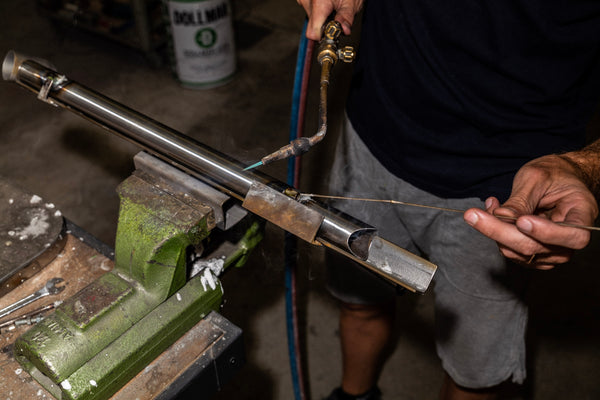

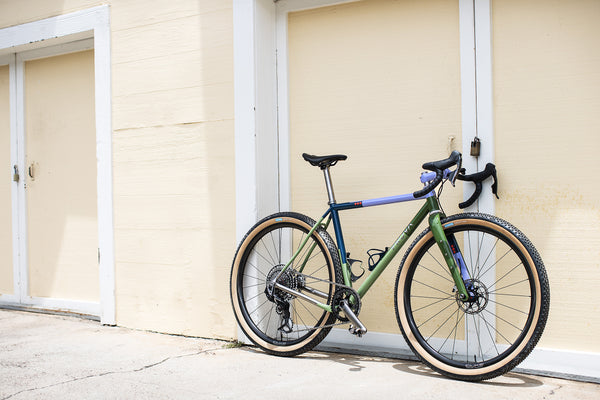
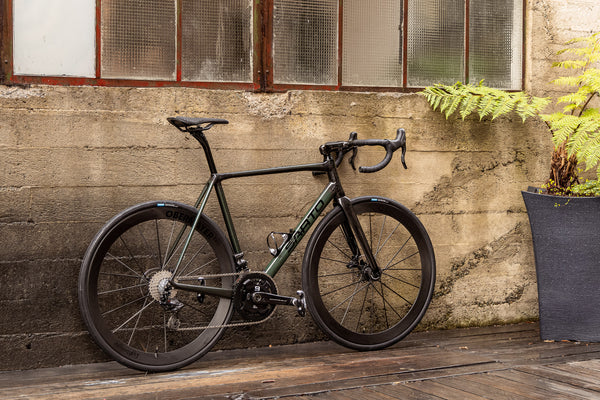

Back to Journal